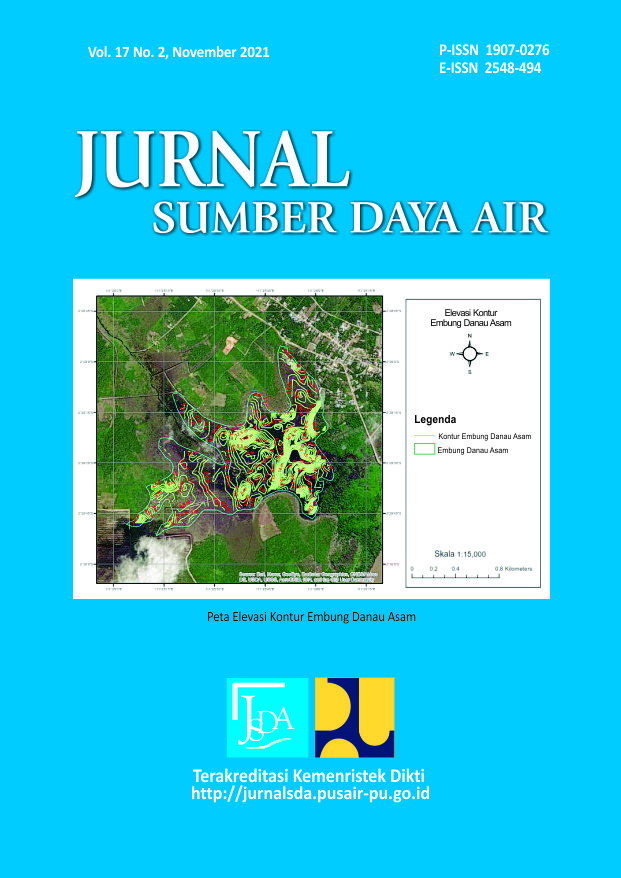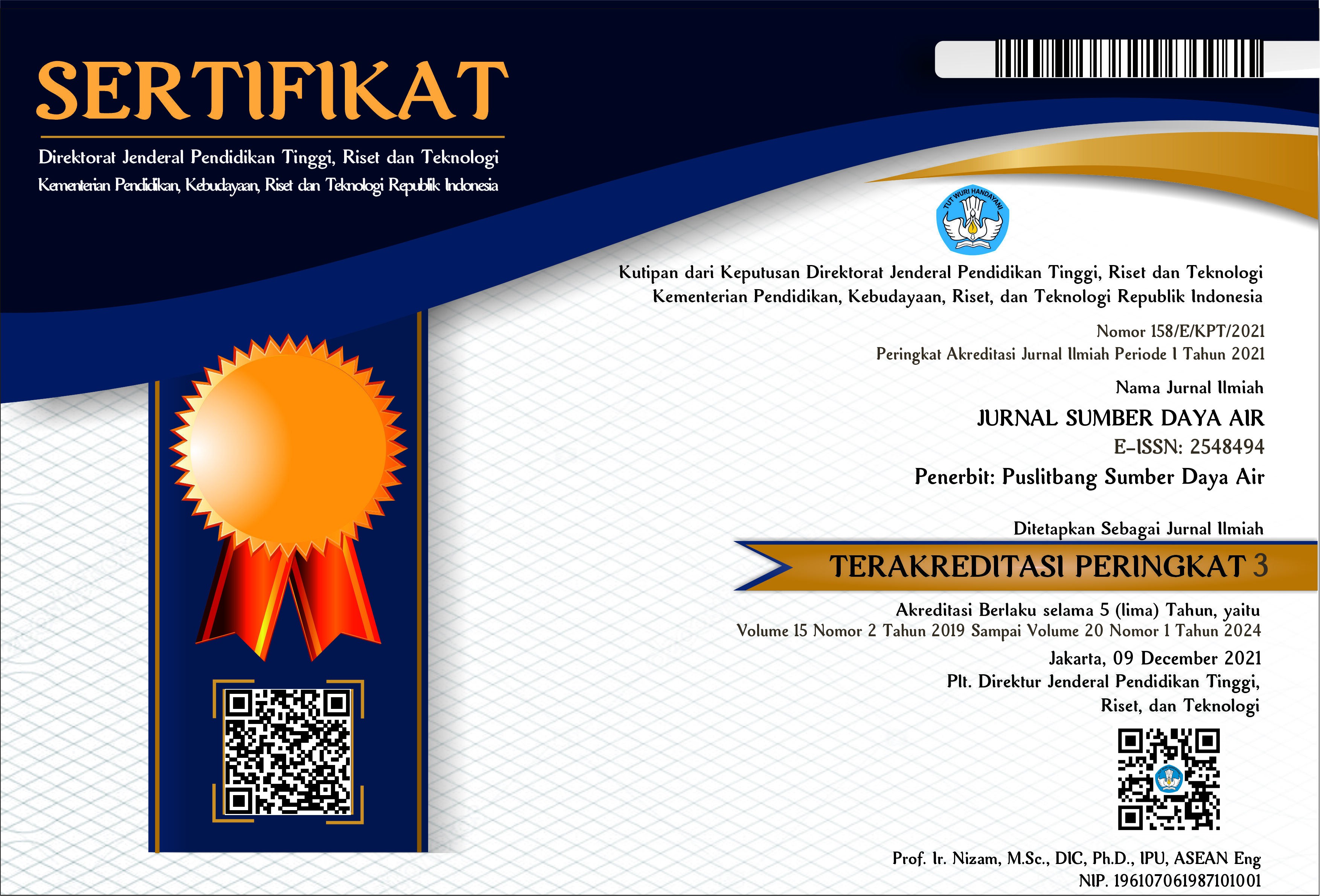ANALISIS KEKERINGAN DI KABUPATEN SRAGEN DENGAN METODE PALMER, THORNTHWAITE, DAN STANDARDIZED PRECIPITATION INDEX
DOI:
https://doi.org/10.32679/jsda.v17i2.742Abstrak
El Nino and La Nina in Indonesia are one of the reasons that caused climate changes, which has possibility of drought and flood disasters. Sragen Regency wherethe dry season occurs, drought happened meanwhile other areas experience floods and landslides. A study on drought needs to be carried out so as to reduce the risk of losses due to the drought hazard. This study is to determine the drought index in Sragen Regency based on several methods and the correlation of each methods and its suitability to the Southern Oscillation Index (SOI) and rainfall. Drought was analyzed using several methods such as Palmer Drought Severity Index (PDSI), Thornthwaite-Matter, and Standardized Precipitation Index (SPI) then correlated with SOI to determine the most suitable method for SOI. The variables are applied in this method are rainfall, temperature, and evapotranspiration. The results showed that the drought potential of the Palmer method is only in Near Normal conditions, which is 1%, Severe drought conditions are 29% for the Thornthwaite-Matter method, and Extreme Dry conditions only reach 1,11% for the SPI method. The PDSI and SPI methods are inversely proportional to the Thornthwaite-Matter method and the most suitable method for SOI values or rainfall is the SPI method. These three methods can be identified the potential for drought with only a few variables so that they could be applied if they only have those data.
Keywords: Drought, PDSI, Thornthwaite-Matter, SPI, SOIUnduhan
Diterbitkan
Cara Mengutip
Terbitan
Bagian
Lisensi
The Authors submitting a manuscript do so on the understanding that if accepted for publication, copyright of the article shall be assigned to Jurnal Sumber Daya Air and Pusat Penelitian dan Pengembangan Sumber Daya Air as publisher of the journal.Copyright encompasses exclusive rights to reproduce and deliver the article in all form and media, including reprints, photographs, microfilms and any other similar reproductions, as well as translations. The reproduction of any part of this journal, its storage in databases and its transmission by any form or media, such as electronic, electrostatic and mechanical copies, photocopies, recordings, magnetic media, etc. , will be allowed only with a written permission from Jurnal Sumber Daya Air and Pusat Penelitian dan Pengembangan Sumber Daya Air.
Jurnal Sumber Daya Air and Pusat Penelitian dan Pengembangan Sumber Daya Air, the Editors and the Advisory International Editorial Board make every effort to ensure that no wrong or misleading data, opinions or statements be published in the journal.




















